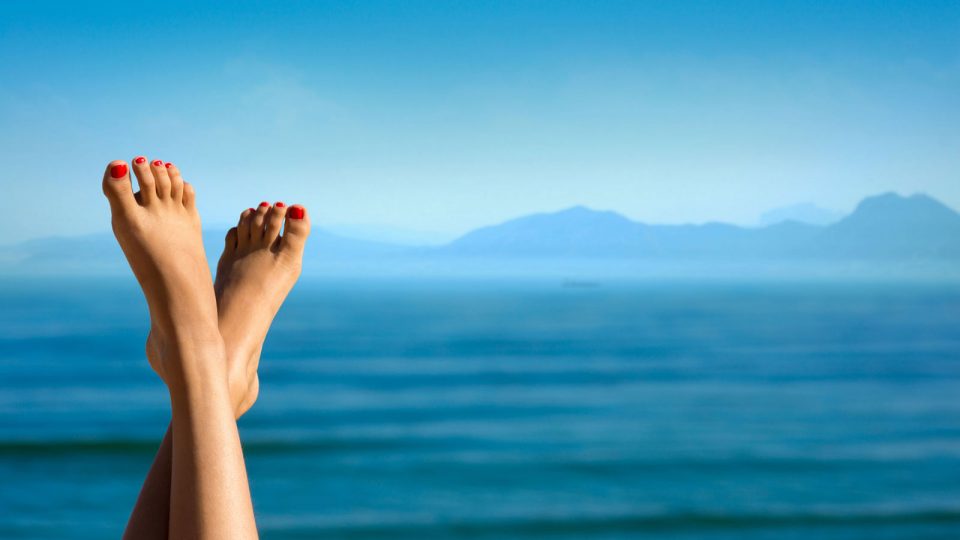Over the years, whispers and innuendo have driven this question forward: Is it true that the bigger a man’s feet, the longer his penis length? You may laugh, but researchers using complex algorithms took the topic seriously, and plenty of them doggedly sought to prove a relationship.
In 1998, Canadian doctors won a Nobel Prize for statistics based on their research, and while they were likely thrilled by the win, they found no relationship between foot and penis size.
Korean researchers refused to believe it. In 1999, they undertook anatomical comparisons on 655 subjects, but wound up agreeing with the Canadians in the end. Undaunted, Brits at London’s University College Hospitals tried their own methodology in 2002. Sorry dudes. Same conclusion.
Have we heard the last of it? Probably not. But that doesn’t mean that we should go back to ignoring our feet, which is why we thought we would do a bit of our own research to pay homage to the body parts that get us where we need and want to go 24/7, no matter how often we abuse them and take them for granted!
Behold the human foot!
According to foot specialist Dr. Brian A. Rothbart, take your feet for granted at your own peril. Professor Rothbart conducted a Google search and found over 147,000,000 hits on the subject of feet alone. Sure, feet don’t have the cachet of a torso or brain, but a little respect, please!
Every foot is home to three arches, 24 ligaments, 26 bones, 20 muscles, 7,800 nerves and 33 joints. Your feet house 25-percent of all of the bones in your body.
Impressed? You should be. After all, your feet get you where you need to go, including conditioning runs and marathons that enhance your life, keep you fit and add a medal or two to your collection.
So when your feet are out of sorts, ailing or injured, you’re not a happy camper. Given their proximity to the ground and weight-bearing responsibilities they endure, it’s no wonder threats like pathogens, cuts, abrasions, breaks and sores can turn your life upside down.
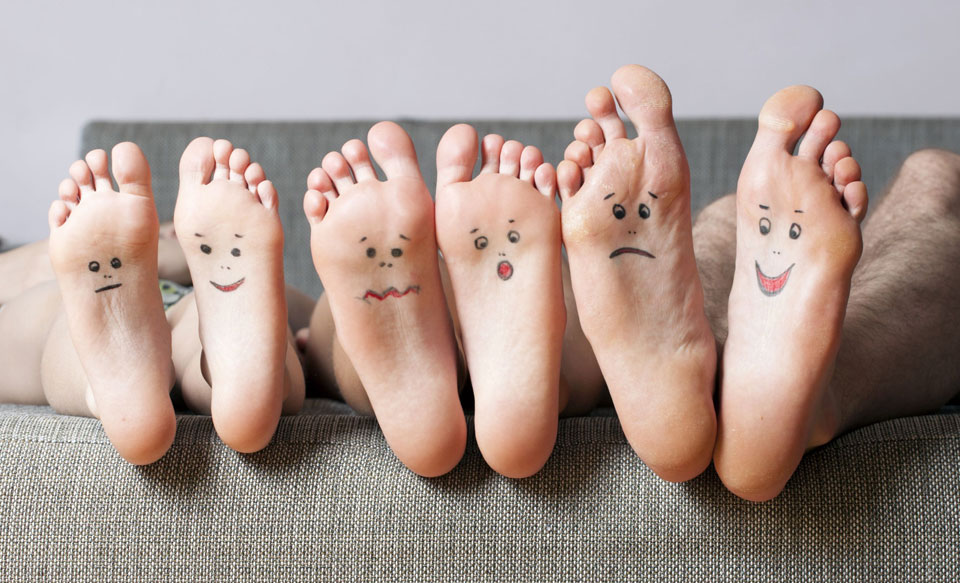
Most common foot ailments
When it comes to having a shady reputation, nothing compares to athlete’s foot. It’s a creepy fungus that hangs out between your toes like a stealthy spy and then thrives when you sweat until the stink forces even your shy friends to ask you to put on your shoes.
But athlete’s foot isn’t the only monster lurking out there. Here are some of the ailments runners confront every day:
- Blisters. Ouch. Despite all precautions, you’re preoccupied while you run, so the skin on your feet can be irritated, and fluid-filled bubbles — even the smallest ones — can make your life miserable.
- Black toenails plague long-distance runners and this condition even has a foreboding name: subungual hematoma. It’s caused by nail beds rubbing against ill-fitting running shoes, especially when the shoes size is too small.
- Runners develop bunions when feet are under such pressure to perform, joints swell and bone literally protrudes beneath the skin. You wind up with an ugly toe joint that looks as gross as it feels.
- A more frequently-occurring running issue is burning feet. The burn doesn’t discriminate, but the usual site of the most discomfort is on the balls of the feet. The most common culprit is (again) ill-fitting running shoes or lack of socks.
- Show us a runner without a corn (or history of corns) and we’ll show you someone who needs to run more! Constant rubbing and pressure are the culprits, so if you get more than your fair share of corns, get a shoe fit evaluation.
- Ever experienced numbness or tingling when you run? Your shoelaces are too tight or your shoes are too tight. You’ve got circulation issues, silly runner!
- Plantar fasciitis is another commonplace foot ailment that can make your life a nightmare once the heel pain sets in as a result of inflammation. Not sure where this sombre-sounding area is located? It’s a band that connects your heel bone to your toes, so don’t mess around with this issue or your marathon career could be up-ended.
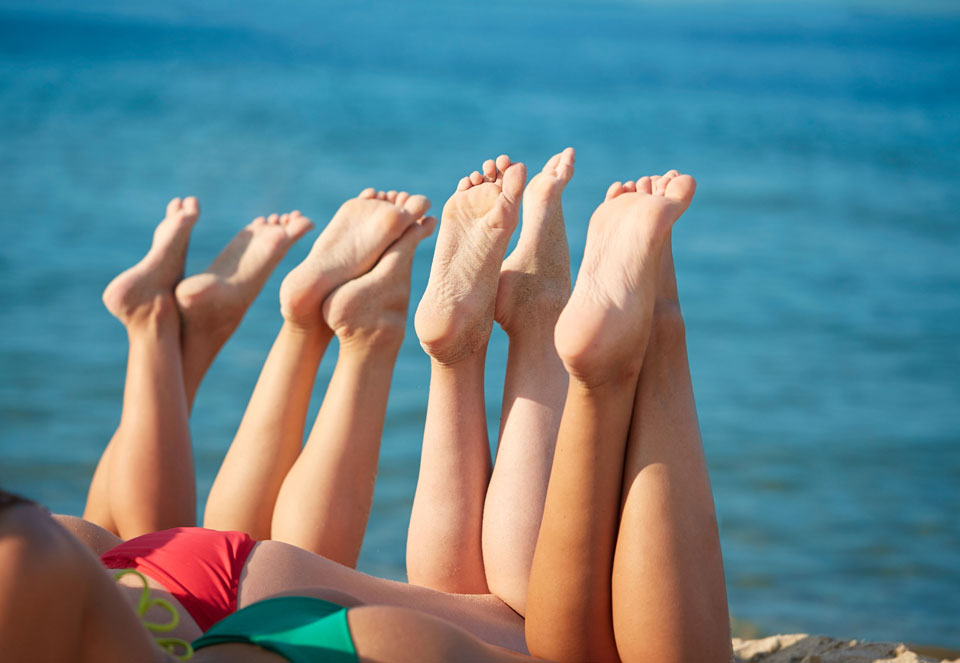
Do shoes impact the way we run?
According to researcher Rachael Rettner, every time a man or woman laces up a pair of running shoes, he or she fights evolution. Rettner studied gait alterations resulting from the abandonment of barefoot running and agreed with physiologists that barefoot runners hit the ground toe first while shod runners land heel first.
In each case, the runner does what comes naturally to cope with impact.
According to “Nature” magazine, runners began wearing shoes less than 50 years ago and you may be surprised to learn that these weren’t sneakers but moccasins and sandals, offering little to no protection from the ground below. The heel/toe or toe/heel debate drones on, as physicians quantify impact with each footfall.
Says Harvard University Professor of Evolutionary Biology Daniel E. Lieberman, whether you use your heels or toes to touch down, the effect on the body is the same: “It’s like someone hitting you… with a hammer two to three times your body weight.”
Lieberman’s exhaustive research concluded: “no studies… demonstrate modern running shoes prevent injuries.” Ouch. We think we’ll stick to our running shoes anyway!
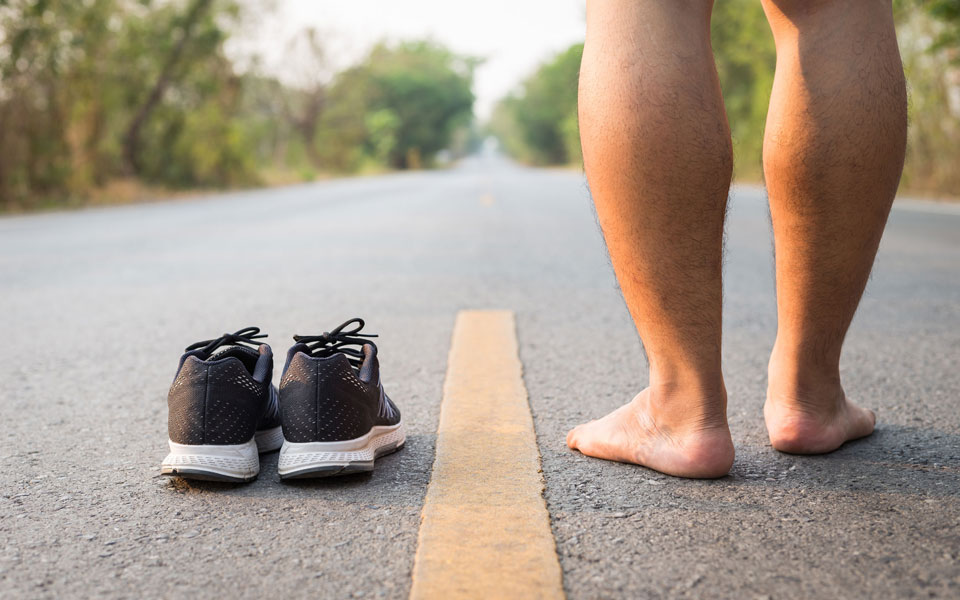
Do your toes tell tales?
Okay. So there’s no relationship between men’s penises and foot size. And we know that running in shoes goes against evolution. But is it possible that your toes tell the story of your ancestry?
Plenty of sober researchers believe that the way your toes line up tells a tale of biological heritage.
Here’s the skinny on this tale of the toes:
- If your toes graduate from long to short, you likely have Egyptian ancestors?
- If your first three toes are all the same height, you may have Roman roots?
- If that second toe is taller than the other four, you may have Greek family history?
- Are all four minor toes the same length? You could come from Germanic roots?
- People with Celtic origins are unique: every toe on the foot is a different length.
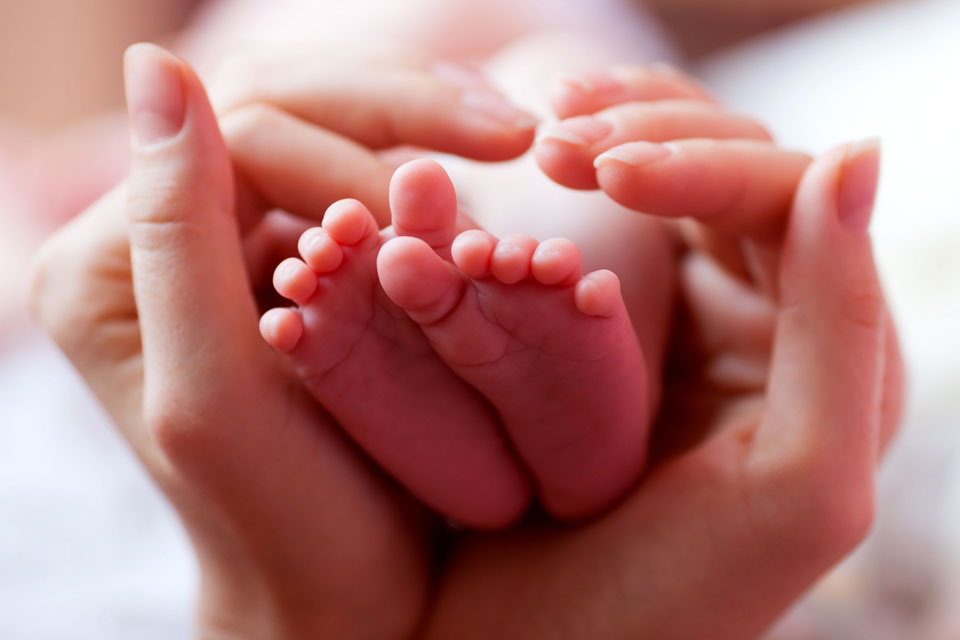
How much can be believed?
That depends upon your fascination with toe evolution, but according to Jane Sheehan, author of the book “Let’s Read Our Feet,” ancestral toe configuration is only the tip of the iceberg.
She believes that you can assess a runner’s personality based on his or her toes!
See where you fit based on her findings:
- Is your second toe longest? You love being in charge.
- Does the tip of your third toe grow at an angle? You’re deceptive. Maybe a career as a spy would work for you.
- Is your little toe tiny, tiny? Expect to live your life in childlike wonderment where it’s all about having fun.
- Does your second toe lean against the big toe? Cut back on sad movies; you’re the sentimental, romantic type.
- Does your little toe point at an angle? You dislike convention; it doesn’t suit your restless, changeable nature.
- Do you have an outrageously big toe? You’re clever and creative.
- Is your big toe small? No worries. You multi-task like a wizard.
- The longer your second toe, the better your leadership qualities.
- If your second toe is smaller, you’re happy to be a follower.
- A long third toe points to personality traits like energy and resourcefulness.
- A short third toe says you’re chilled; relaxing is your favourite pastime.
- Got a long fourth toe? Wow. You adore family, listen like a therapist and love to nurture others.
- Is your fourth toe short? Your focus is on relationships outside the family.
- Can you wiggle your little toe independently of the others? You’re the impulsive, adventurous, flirtatious sort.
- Can’t wiggle your little toe independently? You’re predictable, loyal and dependable.
- Got wide feet? You’re a solid, on-the-go type who won’t sit down until you’re exhausted.
- If your feet are narrow, nothing pleases you more than being pampered.
- You’re probably self-sufficient and independent if you have high arches.
- You’re sociable and rely upon others to keep you company if you happen to have low arches.
Did this article make you more appreciative of your tootsies? If so, we’d like you to let us know what you did to show them some love!


